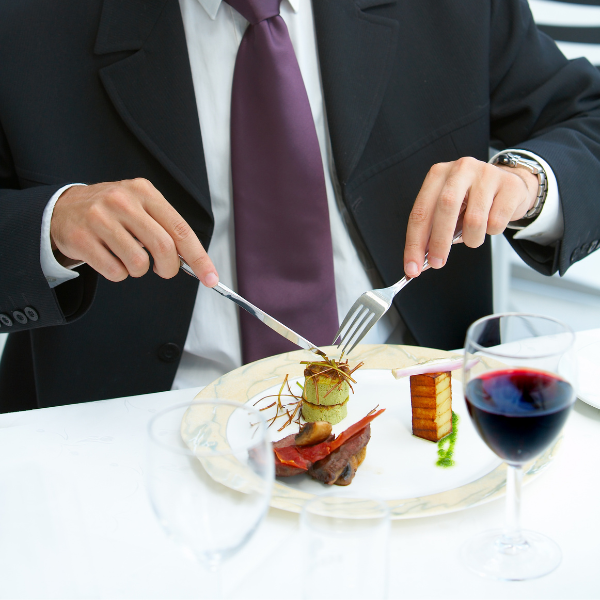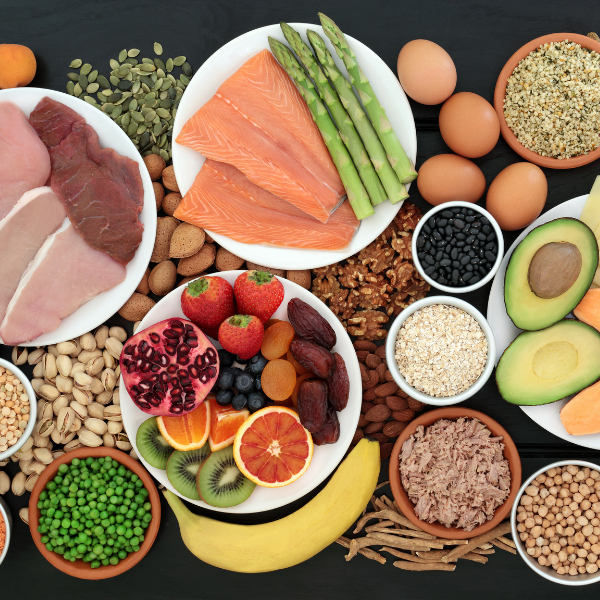Cut-resistant gloves are an essential piece of safety equipment in any kitchen. They protect your hands from sharp knives, slicers, and other kitchen tools, reducing the risk of accidents and injuries. However, choosing the right cut-resistant gloves can be a daunting task with various options available. In this guide, we'll break down the key factors to consider when selecting the perfect cut-resistant gloves for your kitchen.
Table of content
What Are Cut Resistant Gloves?
Cut-resistant gloves are specialized protective gloves designed to reduce the risk of cuts, slashes, and abrasions to the hands and fingers when working with sharp objects or in potentially hazardous environments. These gloves are constructed from materials that have high resistance to cuts and punctures, offering a barrier between the wearer's skin and sharp edges, blades, or other cutting hazards.
Key Features Of Cut-Resistant Gloves Include:
Resilient Materials: Cut-resistant gloves are commonly crafted from materials renowned for their robust cut-resistant properties. The materials are chosen for their ability to withstand the force applied by sharp objects.
Various Cut Resistance Levels: Cut-resistant gloves are often rated on a scale, such as the ANSI/ISEA cut resistance scale, which ranges from A1 (lowest) to A9 (highest). These levels indicate the degree of cut protection the gloves provide, with higher levels offering more substantial protection.
Dexterity And Flexibility: While providing cut protection, many cut-resistant gloves are designed to maintain a reasonable level of dexterity and flexibility. This is crucial for tasks that require precise hand movements and manual skills, such as using knives or handling small objects.
Grip Enhancement: Some cut-resistant gloves feature coatings or textures that enhance grip. This is especially important for maintaining control over tools and objects, reducing the risk of accidents caused by slipping.
Comfort And Fit: Cut-resistant gloves come in various sizes to ensure a proper fit for the wearer's hands. A good fit enhances comfort and reduces the likelihood of the gloves slipping off during use.
What Is The Difference Between Cut-Resistant And Cut Proof Gloves?
Cut-Resistant Gloves: These gloves are designed to reduce the risk of cuts and lacerations but do not guarantee complete protection against all cutting hazards. They are made from materials with high cut resistance, such as kevlar, dyneema, or stainless steel mesh. Cut-resistant gloves are effective in mitigating the risk of injury but may still allow some level of penetration depending on the force and sharpness of the object.
Cut-Proof Gloves : These gloves are impervious to cuts under most circumstances. However, no gloves are entirely cut-proof. While some gloves are highly cut-resistant and can withstand substantial force, they are not immune to all cutting hazards.
What Is Glove Resistance Level?
The term "glove resistance level" typically refers to the level of protection or resistance that a specific type of glove provides against various hazards, such as cuts, abrasions, punctures, chemicals, or heat. This level is often determined through standardized testing and rating systems specific to the type of glove and the hazards it is designed to protect against.
In the context of cut-resistant gloves, the "cut resistance level" refers to the glove's ability to withstand cuts from sharp objects. It is often rated on a scale, such as the ANSI/ISEA 105 scale for cut resistance, where gloves are assigned a rating ranging from A1 (lowest) to A9 (highest), indicating their cut protection capabilities.
Understanding the ANSI/ISEA 105 Scale for Cut Resistance
Here is an overview of the ANSI/ISEA 105 scale for cut resistance:
A1 to A9: The cut resistance rating scale for gloves ranges from A1 to A9, with A1 indicating the lowest level of cut resistance and A9 representing the highest level of cut protection.
A1 to A3: Gloves in this range offer basic to low cut resistance and are suitable for light-duty tasks with minimal cut hazards.
A4 to A6: Gloves in this range provide moderate cut resistance and are suitable for tasks involving moderate cutting hazards, such as handling sharp objects and materials.
A7 to A9: Gloves in this higher range offer advanced cut resistance and are ideal for heavy-duty tasks that pose significant cutting risks, including work with sharp tools, machinery, and industrial equipment.
The ANSI/ISEA 105 scale provides a clear and standardized way for users to identify the level of cut protection a pair of gloves offers. It helps individuals and safety professionals select gloves that match the specific hazards and requirements of their work environments, enhancing hand safety and reducing the risk of injuries.
Different Types of Materials and Coatings of Cut-Resistant Gloves
Materials:
Materials play a crucial role in the effectiveness of cut-resistant gloves. The choice of materials determines the glove's ability to protect against cuts and punctures. Here are the different types of materials used for making cut-resistant gloves:
Kevlar Gloves: Kevlar gloves are lightweight and flexible, ideal for tasks requiring dexterity. They offer good cut resistance and are comfortable to wear for extended periods.
Stainless Steel Mesh: These gloves provide exceptional cut protection and are often used in industrial kitchens. They're highly durable but may be less comfortable for prolonged use.
Dyneema Gloves: Dyneema gloves combine impressive cut resistance with flexibility and comfort. They are suitable for a wide range of kitchen tasks.
Coatings:
Coatings play a significant role in enhancing the performance and functionality of cut-resistant gloves. These coatings are given below, typically applied to the palm or fingers of the gloves, improve grip, add protection against contaminants, improve comfort, and serves many more functions.
Nitrile Coating: Nitrile-coated gloves provide a secure grip and are resistant to oils and liquids. They are excellent for tasks where a firm hold on utensils and ingredients is crucial.
Latex Coating: Latex-coated gloves offer good grip and flexibility. They are suitable for tasks that require tactile sensitivity.
What Are The Different Specialized Gloves For Specific Tasks?
There are different types of gloves made for specialized tasks. Below are examples of a few different types of gloves made for specific tasks.
Metal Mesh Gloves
Metal mesh gloves are constructed with interwoven stainless steel rings, providing a barrier against sharp objects like knives or machinery parts. While offering excellent protection, they can limit dexterity due to their rigid structure, making them more suitable for tasks prioritizing safety over intricate hand movements. Their durability and resistance to cuts make them a preferred choice in industries where occupational hazards are prevalent.
Oyster Shucking Gloves
Oyster shucking gloves often feature a textured surface on the palm and fingers to improve grip when handling slippery oyster shells. The cut-resistant material used in these gloves not only protects against accidental slips but also provides insulation against the cold temperatures often associated with shucking fresh oysters. Additionally, some designs incorporate reinforced stitching or extra padding in key areas to enhance durability and comfort during prolonged use.
Heat-Resistant Plus Cut-Resistant Gloves
These specialized gloves are typically made from advanced materials such as Kevlar or Nomex, which offer both heat resistance and cut protection. They feature a multi-layered construction that insulates against heat while also providing a strong barrier against sharp objects. This combination of features makes them ideal for tasks like handling hot items in industrial settings or working with sharp tools in kitchen environments, where safety is paramount.
Important Criteria While Choosing Gloves
Proper Fit: The right fit is crucial for both comfort and safety. Ill-fitting gloves can be uncomfortable and may compromise dexterity.
Measurement: Measure your hand size accurately, including palm width and finger length. Consult the manufacturer's sizing chart to find the appropriate glove size.
Consider Comfort: Gloves that fit well should allow easy movement of your fingers and not be too tight or too loose. Comfortable gloves are more likely to be worn consistently.
Durability: Consider the expected lifespan of the gloves. Kevlar and Dyneema gloves are known for their durability, while stainless steel mesh gloves can last even longer.
Maintenance: Check the manufacturer's guidelines for cleaning and maintenance. Some gloves are machine washable, while others require hand washing. Proper care extends the life of your gloves.
Replacement: Regularly inspect your gloves for signs of wear, cuts, or fraying. Replace them when they show significant signs of damage to maintain their protective qualities.
Dexterity: Ensure that the gloves provide adequate dexterity for the tasks you perform in the kitchen. Too much bulk can hinder your ability to handle small ingredients or utensils.
Grip: Look for gloves with a grip-enhancing texture or coating to prevent slips and maintain control over knives and tools.
Cut-Resistant Gloves Safety And Compliance
Regulatory Compliance: Check if the gloves meet relevant safety and regulatory standards, such as ANSI/ISEA cut-resistant standards. Compliance ensures that the gloves offer the specified level of protection.
Certifications: Some gloves may be certified by third-party organizations for their cut-resistant properties. These certifications can provide additional assurance of quality and safety.
Choose the Right Cut-Resistant Gloves for Kitchen Safety
In the bustling kitchen environment, safety is paramount, especially when handling sharp knives and kitchen tools. Cut-resistant gloves are indispensable companions for chefs and culinary enthusiasts, providing a protective barrier against potential hazards.
When it comes to safety, investing in the right cut-resistant gloves is an essential step toward protecting your hands while preparing delicious meals. Whether you're a professional chef or a home cook, selecting the appropriate gloves based on cut resistance levels, materials, and coatings ensures a safe and enjoyable culinary experience. So, equip yourself with the right gloves, sharpen those knives, and let your creativity flourish with confidence.
















